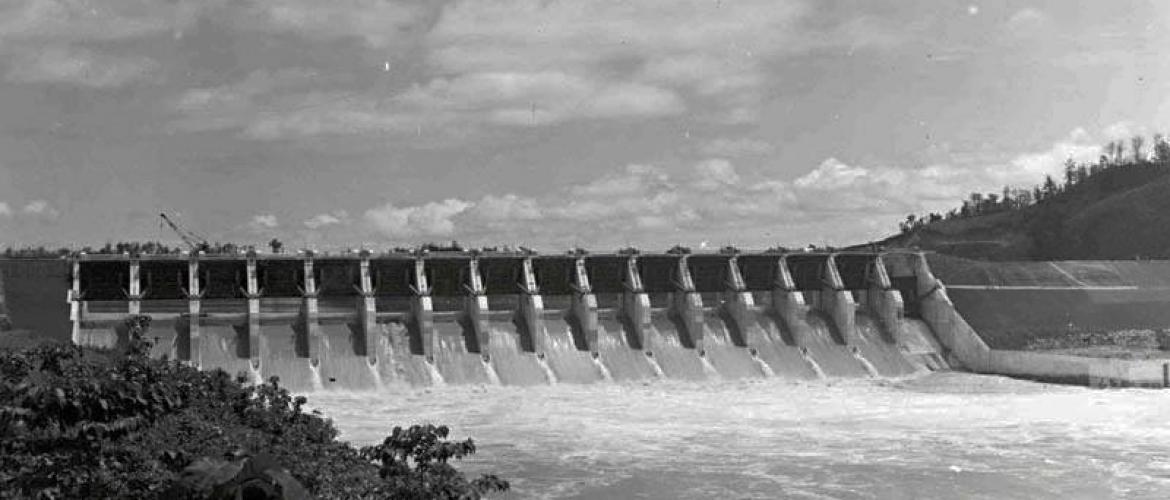Bangladesh’s energy sector and competing interests
May 13, 2019 | Expert Insights

Background
Bangladesh gained its independence in 1971 after breaking away from Pakistan with Indian assistance. Independent Bangladesh endured famine, natural disasters, and widespread poverty, as well as political turmoil and military coups. The restoration of democracy in 1991 was followed by relative calm and rapid economic progress. Today, Bangladesh is a major manufacturer of textiles.
Rivers dominate Bangladesh, and the country is home to the world’s largest delta. The Ganges and Brahmaputra drain into the Bay of Bengal through Bangladesh.
The country shares a border with India and Myanmar. As the state is nearly surrounded by India, sharing a 2,582-mile border, the two countries share a close international partnership. However, Bangladesh has sought to limit New Delhi’s role in the region , while ensuring its water security.
Bangladesh has limited energy reserves with small amounts of provable oil, coal and natural gas. The country has struggled with power outages. In 2014, one blackout affected 100 million Bangladeshis, over 60% of the population. The gap between the country’s energy consumption and supply is growing steadily. Approximately 62% of Bangladesh’s electricity comes from natural gas, with 10% from diesel, 5% from coal, 3% from heavy oil and 3% from renewable sources. However, gas is also required for the industrial sector. Therefore, the country has to continuously find a balance between power production and developing the industrial sector.
Analysis
PowerChina recently partnered with a British company to build a power plant in Bangladesh. This comes after China Huadian Hong Kong Company Limited agreed to construct a power plant in 2018.
Bangladesh’s growing economy and large population are always under risk of energy insecurity. With 30% Bangladeshis lacking electricity, the country views the energy crisis as an impediment to development. The country’s political history indicates that stability follows development. Bangladesh sees foreign direct investment in the energy sector as a viable method to improve its energy situation quickly. To keep its options open in terms of energy resources, Bangladesh has actively courted international investment.
British, Chinese, Indian and American companies have sought to invest in the country’s energy sector. In 2015, China surpassed India as Bangladesh’s most significant energy development partner. China’s deep pockets and willingness to invest in foreign countries makes it an attractive partner for Dhaka.
China’s investment in Bangladesh may spark concern in India, especially regarding engagement in the country’s energy sector. China has already invested at least US$ 31 billion in Bangladesh, making the country the second-largest benefactor of Beijing in South Asia. These investments include roads, railways, coal power plants, water treatment facilities, jute mills, fibre optic cables, special economic zones etc. The Policy Research Institute of Bangladesh estimates that once private sector investments are added, the figure rises to US$ 42 billion.
Beijing looks to use Bangladesh to extend a corridor from Yunnan province, across Myanmar, northeastern India, through Dhaka and on to Kolkata. The province is landlocked, although it contains large reserve of natural resources that China looks to capitalise on through trade. China’s overall lack of resources and desire to control its supply chain drives them to build such economic corridors. Conversely, India sees Bangladesh as a useful partner in expanding its overland access with its northeastern states. These states remain isolated from the rest of India, save for the narrow 22km Siliguri Corridor. The competing interests have already led to power struggles in Bangladesh. A Chinese consortium also bought a 25% stake in the Dhaka Stock Exchange, despite Indian objections that China was using the deal to gain political power. In February 2016, Dhaka cancelled a plan for China to build and operate a deep-sea port at Sonadia after pressure from New Delhi.
India’s relationship with China is complicated. The two countries share deep trade ties despite tense relations. India’s opposition to China is primarily based on fears of encirclement through the Belt and Road Initiative (BRI). The BRI includes five of India’s neighbours: Pakistan, Bangladesh, Sri Lanka, the Maldives and Nepal. New Delhi worries that the initiative will give Beijing political influence in neighbouring capitals and that new ports and highways built by China could one day aid them in a military conflict.
Counterpoint
Although Bangladesh has little energy resources, the country overwhelmingly leans on fossil fuels. However, given that the country has the world’s largest delta, the potential for hydroelectricity generation is vast. Despite this, the country heavily subsides the use of fossil fuels, discouraging investment in the development of hydroelectricity. Additionally, the entire energy sector is subsidised, dissuading private investors from developing hydropower.
The country currently has only one hydroelectric power station at the Kaptai Dam. Although Bangladesh has mostly flat terrain which limits hydropower potential, new technologies enable energy generation from water. Most importantly, there islittle interest amongst decision makers in hydroelectricity generation with little research undertaken into its potential.
Assessment
Our assessment is that Bangladesh is using China’s desire to secure resources and its supply chain, as well as Indian reservations concerning China’s BRI, to reduce the gap between its demand for energy and supply. We feel that Bangladesh seeks to counterbalance Indian influence by maintaining a partnership with China, while simultaneously developing itself. Bangladesh is unlikely to abandon either country, seeking to capitalise on India’s historical ties with Dhaka and Beijing’s willingness to invest heavily. However, we believe that in the goal to secure a sustainable energy future for Bangladesh, continued investment in fossil fuels is unwise. Bangladesh should aim to increase electricity sourced from renewable sources (currently 3%), especially hydroelectricity. We feel that to capitalise on its hydropower potential, Bangladesh must provide incentives for investment in the sector and commission feasibility studies identifying suitable sites.
Image Courtesy - Govt. Official [CC BY 2.5 (https://creativecommons.org/licenses/by/2.5)]








Comments